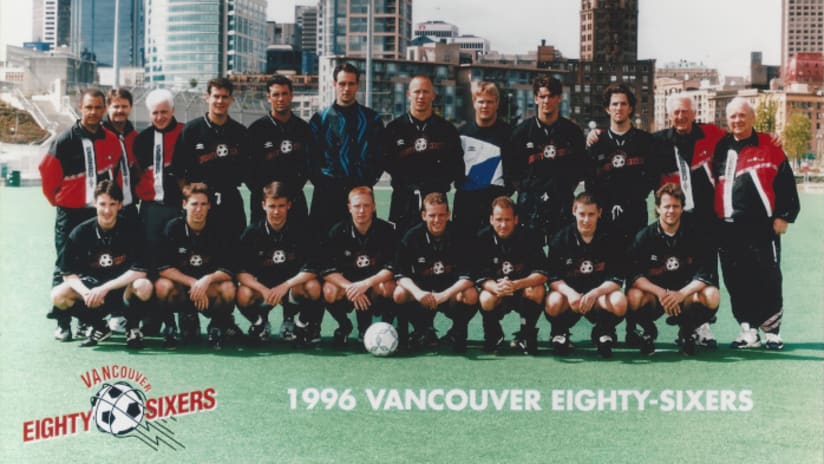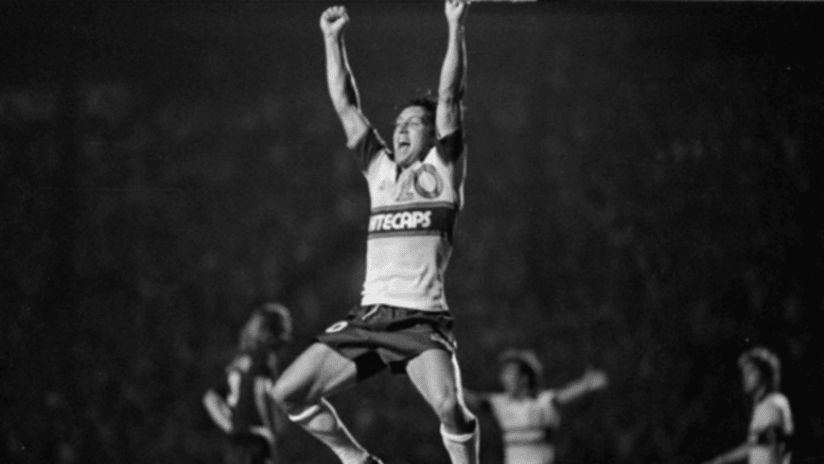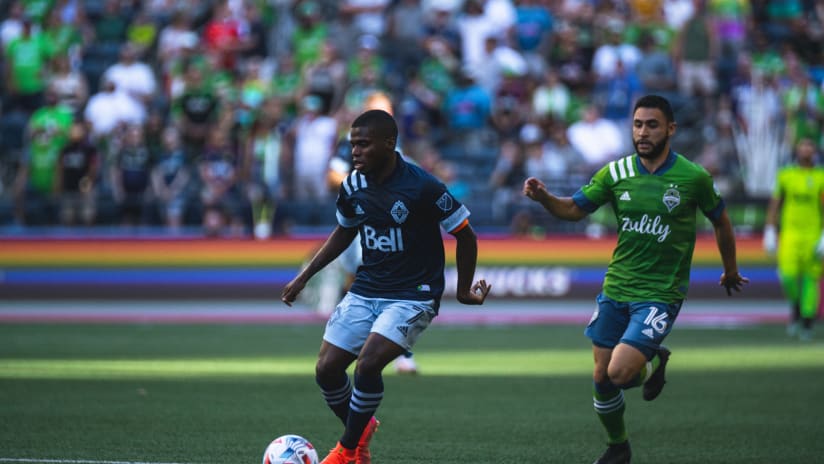Sometimes, there’s more to the beautiful game than meets the eye. Delve deeper with Analysts’ Corner, presented by EC Managed IT, a new blog featuring tactical insights from Whitecaps FC video analyst coach Andrew Peat, assistant video analyst Luke Summers, and Academy and assistant first team video analyst Andrew Foster.
Hi everyone, it’s Luke here again and this time we will be going through free kicks from both a defending and attacking perspective.
When you think of free kicks you probably think of Ronaldo audaciously blasting the ball from 30 yards into the top corner. Of if you’re like me, you believe David Beckham’s free kick against Greece in 2001 was the best moment in human history, but the truth is there’s a lot more at play when it comes to free kicks and I hope to give you just a little bit of insight into this unappreciated world.
Defending free kicks has gone through a bit of a change in modern football. In general, there has been a pretty consistent shift in the way teams defend free kicks with some variations.
Here’s an example of the standard defensive set up by Ligue 1 side Rennes. The principle is simple: set a line to keep the opposition as far away from your goal as possible and then be able to drop with the ball to defend your goal.
Like corners, some free kick shapes have key defensive principles like man or zonal orientation. Let’s take a look at two similar situations from a free kick but two completely different ways of defending them. First up is LA Galaxy and their man marking approach. Man marking like this has kind of drifted away, particularly in Europe, however there is still a lot of value in this set-up as you are able to control the major threat to your goal: the attackers.
The weakness in man-marking is that it’s difficult to mark a player and also see the ball. This leads to defenders often having their back turned towards goal and not being able to attack the ball or defend the man. Secondly, it’s almost impossible to catch anyone in offside positions due to players being more focused on the 1v1 aspect than looking across the line.
Lastly and most crucially, there is no safety net if you are to lose your man. The chances that a defender will be in the line of a free man and the goal is slim from these situations. This makes it significant that the defender must stay with their man.
Here is an example of a zonal orientation from Yokohama F. Marinos from Japan.
Defending zonally requires work to get the level of consistency in their drop. A loose line when dropping allows free runners to exploit gaps in the line. Secondly, it’s very difficult to maneuver in the case of a surprise run or block. This often leaves the chance that players can block the line, increasing the space and time in a dangerous area.
Although in principle there are similarities between corners and free kicks, there are also two major differences: the ball position and offside.
Free kicks are awarded anywhere on the pitch, usually in between the halfway line and the edge of the box. This comes as an advantage and disadvantage to the defending team, as typically the ball is further away from your goal so flight time and accuracy will work in the defending team’s favour. On the other hand, there’s a lot more space for the defending team to defend.
Secondly, on direct corners you cannot be offside whereas with free kicks you can be. This gives a huge advantage to the defending team as they set the invisible limit to how far the attacking team can go. Pep Guardiola brought the idea of manipulating the defensive line to the mainstream when he was at FC Barcelona. He noticed that the defending team holds the cards in terms of starting position and pushed his defensive line extremely high, increasing the distance between the attackers and the goal.
Here are two examples from the current Barcelona squad and Manchester City FC.
The introduction of VAR has also changed the way teams defend free kicks. Teams have become very rigid in the sense that they do not drop until the ball is kicked. This means that they increase the likelihood of catching attackers offside with early movements but also by staying rigid they limit the amount of space attackers can find when defensive units drop and become unorganized. Here are two teams that have adopted this style this season: Liverpool FC and Brighton & Hove Albion.
Now, let’s look at the ways teams can break down these defensive set-ups.
First up are blocks. Similar to one of the ways in which teams create time and space in corners, blocks are often used to create space for an attacker to exploit. Typically, these blocks occur on either end of the defensive line or blocking off a key defender to manoeuvre parts of the defensive line, which would interfere with the flight path of the ball.
Manipulating the defensive line is a concept in which you look to pull a defensive shape into a situation where they are less likely to be able to cover all players and/or the danger zones in the box. Take a look at the two examples below by Manchester United and Birmingham City as they both manipulate the starting position of the defending team by stretching and moving the opposition into vulnerable positions.
A ‘blast’ or ‘dive’ is a play used in American football, in which the running back is handed the ball and looks to find gaps and drive through defensive lines. Within free kicks, there are similarities to American Football in the sense that a defensive line sets the field position of the attacking team. A blast free kick play is typically used against high defensive lines or VAR conscience lines, as it’s very difficult for the defensive line to recover to the ball if the timing of the attack is perfect.
Finally, my personal favourite, misdirection. Misdirection free kicks look to disrupt the line by confusing defenders. Teams tend to use misdirection to utilize space or time that would not be typically not be available from the ‘normal’ delivery and act as a surprise to the defensive team.
Take a look at how England and Sheffield United utilized this idea in their games.
I hope I have been able to show you a basic introduction to the intricacies of free kicks from both a defensive and attacking point of view. Although I highlighted the limitations to scoring from free kicks, they still have significant value in any team’s organization. Free kicks require significant amounts of preparation and team cohesiveness to be successful and if a team is lacking them from a defensive point of view, good set play teams will make them pay.





